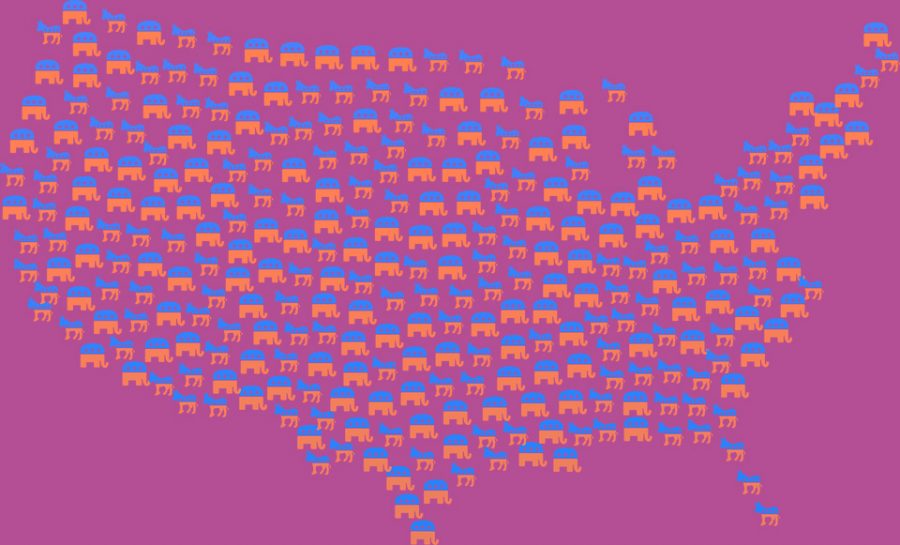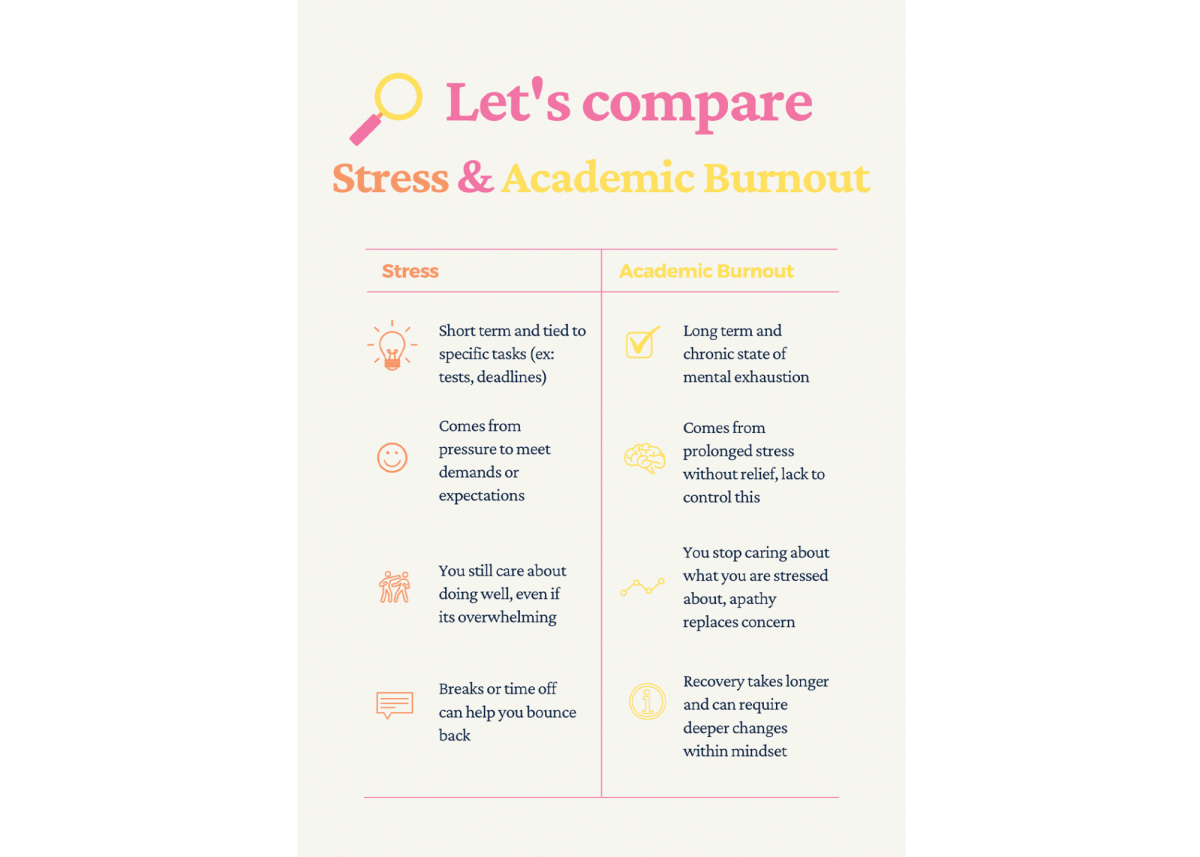Opinion: The current political divide — The US is more partisan than ever
May 11, 2020
People like to argue over the littlest things. Is a hotdog a sandwich? Do you hear Yanney or Laurel? Black and blue or white and gold? Is water wet? Are cats or dogs better? Though these may seem small and irrelevant, it gives people another topic to be divided over. Although many people can agree that a hotdog is not a sandwich, fewer can agree on their opinions of political topics, such as abortion, immigration or gun violence.
Whether you believe it or not, politics play a role in everyday society. Government controls some aspects of your daily life — The speed at which you are allowed to drive, the price you pay for products and what you are allowed to buy. Government and politics are also central to the major debates that deeply divide United States citizens and families.
It is important to recognize how these differences originate. According to a Gallup survey conducted from March 2-13, 2020, 30 percent of Americans identify as Republican, and 30 percent of Americans identify as Democrat. It is also important to distinguish the difference between political party and political ideology. Political ideologies encompass liberal, conservative and libertarian ideals. Political parties exist to unify the people with similar ideologies so they can elect government officials to represent them. The American people are usually quick to blame political parties for the constant arguing, but in reality, the political ideology is what is really separating people.
Historically, the U.S. wasn’t always so divided on political issues. Looking back to 1994, former President Bill Clinton was beginning his presidency. The divide was less apparent. According to the Pew Research Center, 17 percent of Republicans had a “very unfavorable” view of Democrats, and 16 percent of Democrats had a “very unfavorable” view of Republicans. Fast forward to 2017 during the start of President Donald Trump’s presidency, 45 percent of Republicans held a “very unfavorable” view of Democrats, and 44 percent of Democrats held a “very unfavorable” view of Republicans. This growing resentment for the opposition has created, at times, political gridlock that has taken days, weeks or even months to undo.
Starting on Dec. 22, 2018, the U.S. government shut down for what would become the longest government shutdown in American History — 35 days. The dispute came shortly after Trump and Congress couldn’t agree on their spending budget for the following fiscal year. This shutdown illustrates a part of the current political divide and unwillingness to immediately compromise.
What has brought on this growing political divide? It is impossible to pinpoint a single factor, however the president has always had a role of unifying their party. After all, they are the leader of their political party. With Trump, this has been no different. According to a Gallup poll conducted Jan. 16-29, 2020, 94 percent of Republicans approve of Trump’s handling of the country as president. Since then, his approval rating with Republicans has not dropped below 90 percent. Contrast this to Democrats’ approval of Trump. Within the Democrats surveyed in the Gallup poll, only 7 percent approved of Trump’s job as president. This stark contrast existed during the Obama administration, as well. Former President Barack Obama is a Democrat. According to a Gallup poll conducted in January 2017, 95 percent of Democrats approved of Obama’s job, while only 17 percent of Republicans approved of his job.
These approval ratings are telling of a unique feature of today’s political climate. Rather than us being more divided than ever, we are more partisan than ever. Allegiance to one’s party comes before willingness to compromise with another. The U.S. has always been divided on issues. However, the style of partisanship that we are currently seeing is unprecedented.
Kelsey Sejkora, an LSE English teacher and sponsor of Young Democrats, accredits political divide to “a growing sense of distrust — both in elected officials and the system that got them elected.”
The electoral college has been called into question in recent years. Many politicians and citizens believe it isn’t a fair way to elect officials. The debate on whether to abolish the electoral college is still going on today.
Another factor that has contributed to the growing partisanship in our current political climate has been the media. Throughout the mid-20th century, citizens only really had one or two sources of media. In the 21st century, though, there are several news outlets, such as CNN, Fox News, MSNBC, ABC News, CBS News, etc. These major news networks usually cater to an either more conservative or more liberal view of current events. Traditionally, CNN and MSNBC have been known to hold a more liberal view of current events, while Fox News is considered to be more conservative. The American people have picked up on this. They are now able to watch the news network that aligns to their political views, which may contain potentially skewed information, rather than the straight facts.
According to a study published by the Pew Research Center of Journalism and Media in 2020, Democrats tend to trust more news outlets than Republicans. Democrats trust more than 22 news sources, while Republicans trust seven news sources. Democrats seem to trust CNN the most, with 67 percent trust for political news, while 65 percent of Republicans trust Fox News. People are able to pick news networks that cater to their beliefs, and further solidify their sense of reality.
Both incumbent presidents and media bias play a part in political polarization. Politics isn’t a comfortable topic for many people. It is an “off-limits” topic at the dinner table, especially during holidays. It shouldn’t be this way, since the government is so involved in our daily lives. We should be able to openly talk about politics without heavily discriminating and shaming one another for their views.
“We get into the mentality of ‘us versus them,’ where ‘us’ is morally and ethically pure and ‘them’ is morally and ethically evil,” Sejkora said.
Sejkora believes that this is how political polarization is started. The ‘us vs. them’ mentality is another way of saying partisan politics, where ‘us’ is your own political party and beliefs, and ‘them’ is the people with different beliefs.
How can students be a part of the political unification the U.S. needs? To start, young adults are the future.
Sejkora broke it down into three simple tasks. “Listen to each other, keep an open mind and be willing to compromise,” Sejkora said.
Jolene Schlemmer, a Family and Consumer Sciences (FCS) teacher and the sponsor for Teenage Republicans, feels that it is important for everyone to “strive to achieve President Kennedy’s calling — ‘Ask not what your country can do for you, but what you can do for your country.’”
Former President John F. Kennedy posed this thought during his inaugural address in 1961. In other words, Kennedy is asking Americans to find a way to improve their country, rather than waiting around for the country to change.
“Find your strengths, whether it is political or not, and see what you can do to unify each other. Even if it is as small as to just sit and listen to each other,” Schlemmer said.
Simply taking the time to see where another person is coming from can be powerful. It can open your eyes to a side of an issue that you have never thought of.









